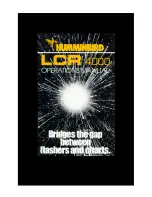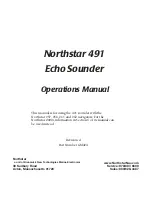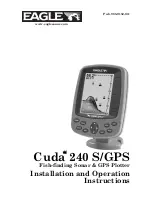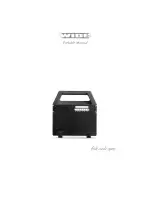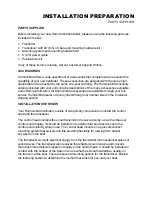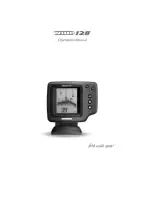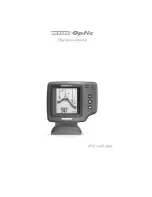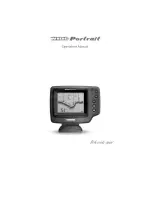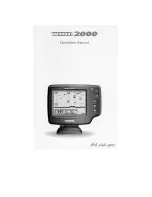
USING THE LCR 4000
THEORY OF OPERATION
Your new LCR is covered by our Lifetime Guaranteed Service policy. We wish you good
luck, good fishing, and many hours of pleasure with your new Humminbird LCR.
THEORY OF OPERATION
Your Humminbird LCR works on the basic principals of sonar.
An electronic signal is generated within the control head of the unit.
When coupled to the transducer, this signal is converted to an ultrasonic signal and is
transmitted toward the bottom. The speed of the ultrasonic signal traveling through the
waters is approximately 4800 feet per second.
The signal travels through the water until it strikes an object or the bottom. At this
instant it is reflected back, picked up by the transducer, reconverted to an electronic
signal and is recorded on the display of the LCR.
The reading at the far right hand position of the display illustrates that which is being
passed over at that time. If you are familiar with a flasher unit, you might think of the
information coming on the right side of the screen as the information that would be seen
at one instant on a flasher (see Figure 1). However, unlike a flasher, this information is
not lost but it is shifted or moved to the left as new information comes on. Therefore, the
information is retained until it disappears from the left hand position of the display.
The display used on the LCR is a Liquid Crystal Display. The material in the display is a
liquid that can be aligned such that it either "blocks" light or it lets light pass through.
This “blocking” of light is what makes the dots on the screen.
Since the LCR’s display depends on light passing through it to make the images,
increasing the light source will make it easier to see. This is why your LCR can be seen
so well in direct sunlight. You will also notice that the display can be seen better at
certain angles. The LCR mounting has been designed for tilting and pivoting so that you
can easily maintain a good angle for viewing. Another characteristic of an LCR display
is that you may find that some polarized glasses might affect the view by causing a
rainbow prism to appear. This condition can possibly be improved by a slight adjustment
in tint.
The high visibility readout of the LCR allows you to see fish, bottom contour and
underwater structure. Targets as close as three inches apart can be separated on the
15 foot setting.
Summary of Contents for LCR 4000
Page 1: ......

